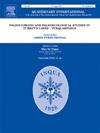The sustainability of dry regions has become a key issue for global development. Their natural and cultural landscapes are facing threats resulting from ongoing global changes. This paper presents an overview of geomorphological, climatic-environmental, and archaeological studies in the hyper-arid eastern Tarim Basin (Lop Nur), northwest China, a world-renowned crossroad for early east-west communications, to provide a scientific foundation for sustaining its nature-culture heritage. The late Quaternary landscape changes in the Lop Nur region are characterised by cycles between oases and yardang deserts, shaping the extensive aeolian landform. Archaeological evidence suggests humans’ adaptation and resilience to today what are viewed as inhospitable environments since the late Pleistocene by exploiting the diverse range of oasis resources, movement, and encouraging adjacent populations to diversify their subsistence base. Settlement- and regional-scale deterioration of available water resources, affected by environmental and climatic dynamics, caused the eventual abandonment. Periodic occupation and abandonment in the Lop Nur region accompanying oasis-desert/yardang environment cycles provide important lessons for present-day policymakers to contextualise the relationship between human communities and fragile ecosystems. The open-air sites in the Lop Nur region represent the best-preserved oasis-desert civilisation, suffering cultural history losses. We propose the urgent necessity to establish a transdisciplinary database, construct a master chronological framework of settlement, and integrate the culture-nature heritage within the network of the Silk Roads. The scientific management of river networks is also critical for protecting those riverine cultural relics. The site- and group-level management of heritage needs to be adapted to the projected changes in climate and environment.


